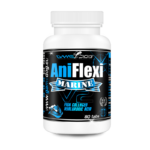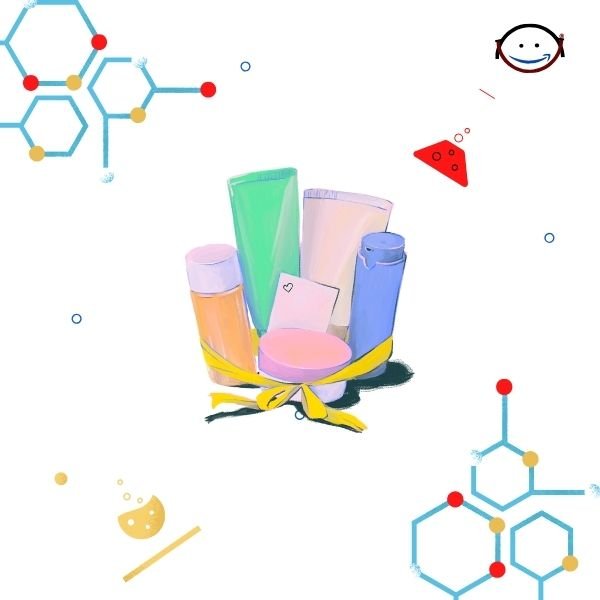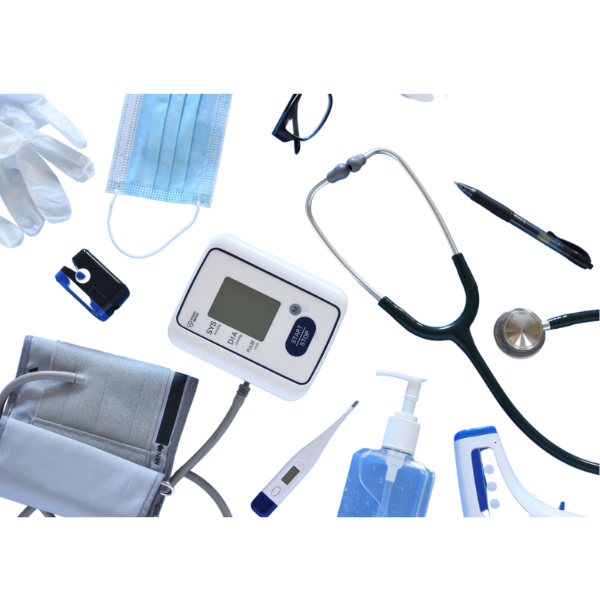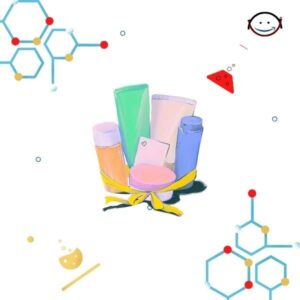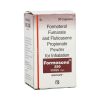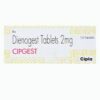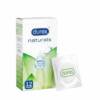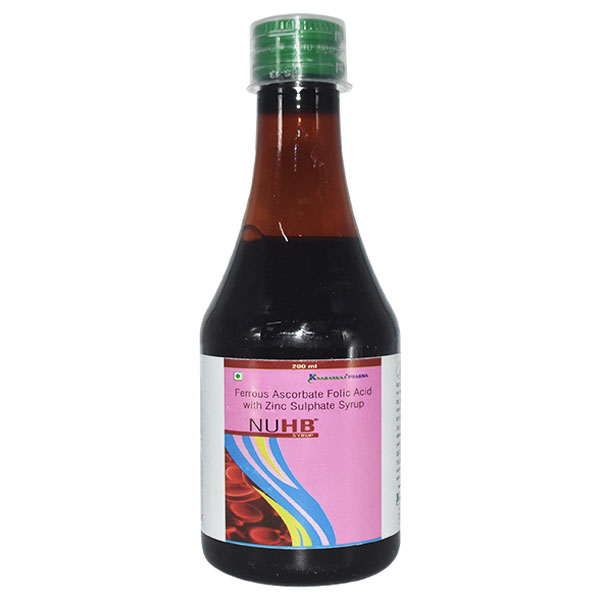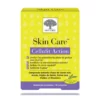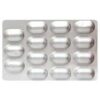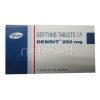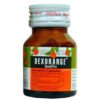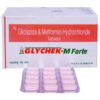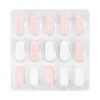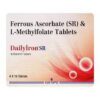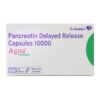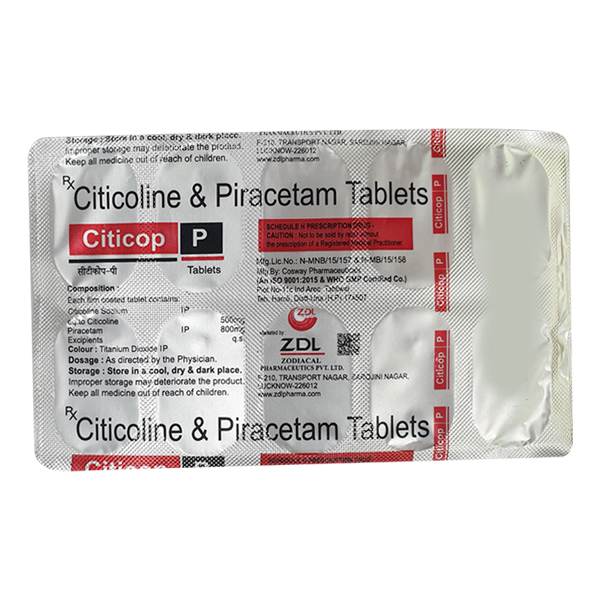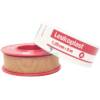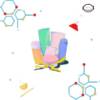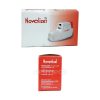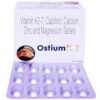-
Formosone 250 Respicap 30?S ₦49,300.00 QTY: 2
-
CARBOPLATIN 150mg Injection 15ml ₦71,400.00 QTY: 1
-
CIPGEST 2MG TAB 10`S ₦12,389.00 QTY: 2
-
Durex Naturals Condoms - 12 Pack ₦25,300.00 QTY: 1
-
DUTAJOY 0.5MG STRIP OF 10 TABLETS ₦3,052.50 QTY: 1
-
NUHB Syrup 200ml ₦30,600.00 QTY: 2
-
Skin Care Cellufit Action Food Supplement 60 Capsules ₦58,463.00 QTY: 2
-
GALVUSMET 50/500MG TAB 15?S ₦6,767.00 QTY: 1
-
Regaine 2% Topical Solution Men and Women 60 ml ₦80.00 QTY: 1
-
Denrit 250mg Tablet 10?S ₦187,000.00 QTY: 1
-
DEZACOR 30MG TAB 6`S ₦7,622.00 QTY: 3
-
DIGENE GEL MINT SYP 200ML ₦2,984.25 QTY: 1
-
GLYCHEK M FORTE STRIP OF 15 TABLETS ₦3,891.00 QTY: 1
-
GLADOR M 2MG FORTE TAB 15`S ₦4,913.00 QTY: 1
-
FEBSMART 40MG STRIP OF 10 TABLETS ₦1,835.75 QTY: 1
-
DAILY IRON SR TABLETS 15?S ₦1,670.75 QTY: 1
-
AGNA 10000 CAP 10`S ₦5,284.00 QTY: 2
-
CITICOP P Tablet 10?s ₦57,800.00 QTY: 1
-
Leukoplast Adhesive Tape - 1.25cm x 5m ₦5,000.00 QTY: 1
-
FERBIN Suspension 150ml ₦30,600.00 QTY: 1
-
Zerodol Tablet ? 10Tab ₦370.00 QTY: 1
-
Beesline? Apitherapy Rejuvenating Facial Super Moisture Mask 25 g ₦4,636.00 QTY: 1
-
ACILOC 300MG TAB 20`S ₦1,100.00 QTY: 1
-
Scholl Air Pillow Comfort Insoles- Provide Comfort & Prevent Foot Pain ₦11,000.00 QTY: 1
-
Novolizer Device 1?S ₦42,500.00 QTY: 1
-
OSTIUM K2 STRIP OF 15 TABLETS ₦8,075.25 QTY: 1
Customer matched zone "Lagos Delivery Options"
“DEZACOR 30MG TAB 6`S” has been added to your basket. Continue shopping
“Formosone 250 Respicap 30?S” has been added to your basket. Continue shopping
“OSTIUM K2 STRIP OF 15 TABLETS” has been added to your basket. Continue shopping
Sort by:
289–304 of 4627 Results
-
SaleAztaCap 4 mgAztaCap 4 mg is indicated to- Strong antioxidant Improves cardiovascular health (Atherosclerosis, reduce cholesterol) Improves immune function Improves condition of skin Protects skin from damage caused by sun (Reduces wrinkles, pimples and other signs of aging) ... Read moreAztaCap 4 mg is indicated to- Strong antioxidant Improves cardiovascular health (Atherosclerosis, reduce cholesterol) Improves immune function Improves condition of skin Protects skin from damage caused by sun (Reduces wrinkles, pimples and other signs of aging) Improves recovery from central nervous system injuries Protects from Parkinson?s disease, Dementia and Alzheimer's disease Protects eyes from cataracts and macular degeneration Reduces inflammation (Arthritis) Reduces risk of infertility Also AztaCap 4 mg effectively reduces oxidative damage to DNA, decreases the risk for many typesof cancer and stabilizes blood sugar.Theropeutic ClassSupplements & adjuvant therapyPharmacologyAztaCap 4 mg acts as an antioxidant by dual mode of action. It suppresses singlet oxygen and also inhibits lipid peroxidation. By these actions it reduces the harmful free radicals. Therefore acts as a very strong antioxidant. AztaCap 4 mg is absorbed by passive diffusion into the intestinal epithelium alongside fatty acids. Then it is incorporated into lipoproteins, transported to the liver, via lymph and blood and partly resecreted with lipoproteins. More than 70% of the AztaCap 4 mg is contained in high density lipoprotein part of plasma. Highest concentration of AztaCap 4 mg is in the small intestine, followed by subcutaneous fat, spleen, liver, heart, kidney and skin and lowest in the muscles.Dosage & Administration of AztaCap 4 mgAdults (18 years and older)- Daily dose is 4 mg. should be taken along with or immediately prior to meals in the morning. Different dose for various use are given below: 2-4 mg: Used as a strong antioxidant, improves cardiovascular health (Atherosclerosis, reduce cholesterol), improves immune function. 4-8 mg: Improves condition of skin, protects skin from sun damage (Reduce wrinkles, pimples and other signs of aging), improves recovery from central nervous system injuries and protects eyes from cataracts and macular degeneration. 8-12 mg: Reduces inflammation (Arthritis) 16 mg: Reduces risk of infertility Dosage of AztaCap 4 mgAdults (18 years and older): Daily dose is 4 mg. Should be taken along with or immediately prior to meals in the morning. 4 mg: As a strong antioxidant, improves cardiovascular health (Atherosclerosis, reduce cholesterol), improves immune function. 4-8 mg: Improves condition of skin, protects skin from sun damage (Reduce wrinkles, pimples and other signs of aging), improves recovery from central nervous systehn injuries and protects eyes from cataracts and macular degeneration. 8-12 mg: Reduces inflammation (Arthritis) 16 mg: Reduces risk of infertility Interaction of AztaCap 4 mgConcomitant intake of AztaCap 4 mg with Cholestyramine, Colestipol, Mineral oil, Orlistat may reduce the absorption rate of AztaCap 4 mg.ContraindicationsContraindicated for those with known allergies to AztaCap 4 mg.Side Effects of AztaCap 4 mgNo severe side effects have been reported yet.Pregnancy & LactationBoth pregnant women and lactating mothers should avoid AztaCap 4 mg supplements as no data on safety has been found yetPrecautions & WarningsPregnant women and nursing mothers should avoid AztaCap 4 mg containing supplements.Overdose Effects of AztaCap 4 mgNo case of overdose has occurred with AztaCap 4 mg.Storage ConditionsStore in cool and dry place, away from direct light. Keep out of reach of children.Drug ClassesSupplements & adjuvant therapyMode Of ActionAztaCap 4 mg acts as an antioxidant by dual mode of action. It suppresses singlet oxygen and also inhibits lipid peroxidation. By these actions it reduces the harmful free radicals. Therefore acts as a very strong antioxidant. AztaCap 4 mg is absorbed by passive diffusion into the intestinal epithelium alongside fatty acids. Then it is incorporated into lipoproteins, transported to the liver, via lymph and blood and partly resecreted with lipoproteins. More than 70% of the AztaCap 4 mg is contained in high-density lipoprotein part of plasma. Highest concentration of AztaCap 4 mg is in the small intestine, followed by subcutaneous fat, abdominal fat, spleen, liver, heart, kidney and skin and lowest in the muscles.PregnancyBoth pregnant women and lactating mothers should avoid AztaCap 4 mg supplements as no data on safety has been found yet.Sku: 1736103090-3167
AztaCap4 mg
₦1,210.00Original price was: ₦1,210.00.₦1,089.00Current price is: ₦1,089.00.₦1,210.00Original price was: ₦1,210.00.₦1,089.00Current price is: ₦1,089.00. Add to basket Quick View -
SaleAztor 10 mgAztor 10 mg is indicated as an adjunct to diet to reduce elevated total cholesterol, LDL cholesterol, apolipoprotein B (Apo-B) and triglycerides levels in following diseases when response to diet and other non-pharmacological measures is inadequate. To reduce total cholesterol and LDL cholesterol in patients with heterozygous and homozygous familial hypercholesterolaemia. To reduce elevated cholesterol and triglycerides in patient with mixed dyslipidemia (Fredrickson Type Ia and Ib). For the treatment of patients with elevated serum triglyceride levels in hypertriglyceridaemia (Fredrickson Type IV). For the treatment of patients with dysbetalipoproteinaemia (Fredrickson Type III). To reduce cardiac ischaemic events in patients with asymptomatic or mild to moderate symptomatic coronary artery disease with elevated LDL-cholesterol level. To reduce total and LDL-cholesterol concentrations patients with hypercholesterolemia associated with or exacerbated by diabetes mellitus or renal transplantation.Theropeutic ClassOther Anti-anginal & Anti-ischaemic drugs, StatinsPharmacologyAtorvastatin is a selective inhibitor of HMG-CoA reductase. This enzyme is the rate-limiting enzyme responsible for the conversion of HMG-CoA to mevalonate, a precursor of sterols, including cholesterol. Atorvastatin lowers plasma cholesterol and lipoprotein levels by inhibiting HMG-CoA reductase and cholesterol synthesis in the liver and increases the number of hepatic LDL receptors on the cell surface for enhanced uptake and catabolism of LDL.Dosage & Administration of Aztor 10 mgPrimary hypercholesterolaemia and combined hyperlipidaemia- Adults: Usually 10 mg once daily; if necessary, may be increased at intervals of at least 4 weeks to max. 80 mg once daily. Child (10-18 years): Initially 10 mg once daily, increased if necessary at intervals of at least 4 weeks to usual max. 20 mg once daily. Familial hypercholesterolaemia- Adults: Initially 10 mg daily, increased at intervals of at least 4 weeks to 40 mg once daily; if necessary, further increased to max. 80 mg once daily (or 40 mg once daily combined with anion-exchange resin in heterozygous familial hypercholesterolaemia). Child (10-18 years): Initially 10 mg once daily, increased if necessary at intervals of at least 4 weeks to usual max. 80 mg once daily. Prevention of cardiovascular events- Adults: Initially 10 mg once daily adjusted according to response.Dosage of Aztor 10 mgPrimary hypercholesterolaemia and combined hyperlipidaemia- Adults: Usually 10 mg once daily; if necessary, may be increased at intervals of at least 4 weeks to max. 80 mg once daily. Child (10-18 years): Initially 10 mg once daily, increased if necessary at intervals of at least 4 weeks to usual max. 20 mg once daily. Familial hypercholesterolaemia- Adults: Initially 10 mg daily, increased at intervals of at least 4 weeks to 40 mg once daily; if necessary, further increased to max. 80 mg once daily (or 40 mg once daily combined with anion-exchange resin in heterozygous familial hypercholesterolaemia). Child (10-18 years): Initially 10 mg once daily, increased if necessary at intervals of at least 4 weeks to usual max. 80 mg once daily. Prevention of cardiovascular events- Adults: Initially 10 mg once daily adjusted according to response.Interaction of Aztor 10 mgThe risk of myopathy during treatment with Atorvastatin is increased with concurrent administration of cyclosporin, fibric acid derivatives, erythromycin, azole antifungals and niacin. No clinically significant interactions were seen when Atorvastatin was administered with antihypertensives or hypoglycemic agents. Patients should be closely monitored if Atorvastatin is added to digoxin, erythromycin, oral contraceptives, colestipol, antacid and warfarin.ContraindicationsAztor 10 mg should not be used in patient with hypersensitivity to any component of this medication. It's contraindicated in active liver disease or unexplained persistent elevations of serum transaminases. It is also contraindicated in patient with history of serious adverse reaction to prior administration of HMG-CoA reductase inhibitors.Side Effects of Aztor 10 mgAztor 10 mg is generally well-tolerated. The most frequent side effects related to Aztor 10 mg are constipation, flatulence, dyspepsia, abdominal pain. Other side effects includes infection, headache, back pain, rash, asthenia, arthralgia, myalgia.Pregnancy & LactationAztor 10 mg is contraindicated in pregnancy and while breast-feeding. Women of child bearing potential should use appropriate contraceptive measures during Atorvastatin therapy. If the woman become pregnant while taking Aztor 10 mg, it should be discontinued.Precautions & WarningsLiver effects: Liver function tests should be performed before the initiation of treatment and periodically thereafter. Atorvastatin should be used with caution in patients who consume substantial quantities of alcohol or have a history of liver disease. Atorvastatin therapy should be discontinued if markedly elevated CPK levels occur or myopathy is diagnosed or suspected.Overdose Effects of Aztor 10 mgSpecific treatment is not available for atorvastatin overdose. The patient should be treated symptomatically and supportive measures instituted, as required. Liver function tests should be performed and serum CK levels should be monitored. Due to extensive atorvastatin binding to plasma proteins, hemodialysis is not expected to significantly enhance atorvastatin clearance.Storage ConditionsKeep in a dry place away from light and heat. Keep out of the reach of children.Use In Special PopulationsGeriatric Use: Of the 39,828 patients who received Atorvastatin in clinicalstudies, 15,813 (40%) were ?65 years old and 2,800 (7%) were ?75 years old. No overall differences in safety or effectiveness were observed between these subjects and younger subjects, and other reported clinicalexperience has not identified differences in responses between the elderly and younger patients, but greater sensitivity of some older adults cannot be ruled out. Since advanced age (?65 years) is a predisposing factor for myopathy, Atorvastatin?should be prescribed with caution in the elderly.Hepatic Impairment: Atorvastatin?is contraindicated in patients with active liver disease whichmay include unexplained persistent elevations in hepatic transaminase levelsDrug ClassesOther Anti-anginal & Anti-ischaemic drugs, StatinsMode Of ActionAtorvastatin is a selective inhibitor of HMG-CoA reductase. This enzyme is the rate-limiting enzyme responsible for the conversion of HMG-CoA to mevalonate, a precursor of sterols, including cholesterol. Atorvastatin lowers plasma cholesterol and lipoprotein levels by inhibiting HMG-CoA reductase and cholesterol synthesis in the liver and increases the number of hepatic LDL receptors on the cell surface for enhanced uptake and catabolism of LDL.PregnancyPregnancy: Atorvastatin is contraindicated during pregnancy. Safety in pregnant women has not been established. No controlled clinical trials with atorvastatin have been conducted in pregnant women. Rare reports of congenital anomalies following intrauterine exposure to HMG-CoA reductase inhibitors have been received. Animal studies have shown toxicity to reproduction. Maternal treatment with atorvastatin may reduce the fetal levels of mevalonate which is a precursor of cholesterol biosynthesis. Atorvastatin should not be used in women who are pregnant, trying to become pregnant or suspect they are pregnant. Treatment with atorvastatin should be suspended for the duration of pregnancy or until it has been determined that the woman is not pregnantLactation: It is not known whether atorvastatin or its metabolites are excreted in human milk. In rats, plasma concentrations of atorvastatin and its active metabolites are similar to those in milk. Because of the potential for serious adverse reactions, women taking atorvastatin should not breastfeed their infants. Atorvastatin is contraindicated during breastfeeding.Pediatric UsesHepatic impairment: Aztor 10 mg should be used with caution in patients with hepatic impairment. Pediatric use: For patients aged 10 years and above, the recommended starting dose of atorvastatin is 10 mg per day with titration up to 20 mg per day. Aztor 10 mg is not indicated in the treatment of patients below the age of 10 years.Sku: 1736106470-4156
Aztor10 mg
₦6,380.00Original price was: ₦6,380.00.₦5,869.60Current price is: ₦5,869.60.₦6,380.00Original price was: ₦6,380.00.₦5,869.60Current price is: ₦5,869.60. Add to basket Quick View -
SaleAztor 20 mgAztor 20 mg is indicated as an adjunct to diet to reduce elevated total cholesterol, LDL cholesterol, apolipoprotein B (Apo-B) and triglycerides levels in following diseases when response to diet and other non-pharmacological measures is inadequate. To reduce total cholesterol and LDL cholesterol in patients with heterozygous and homozygous familial hypercholesterolaemia. To reduce elevated cholesterol and triglycerides in patient with mixed dyslipidemia (Fredrickson Type Ia and Ib). For the treatment of patients with elevated serum triglyceride levels in hypertriglyceridaemia (Fredrickson Type IV). For the treatment of patients with dysbetalipoproteinaemia (Fredrickson Type III). To reduce cardiac ischaemic events in patients with asymptomatic or mild to moderate symptomatic coronary artery disease with elevated LDL-cholesterol level. To reduce total and LDL-cholesterol concentrations patients with hypercholesterolemia associated with or exacerbated by diabetes mellitus or renal transplantation.Theropeutic ClassOther Anti-anginal & Anti-ischaemic drugs, StatinsPharmacologyAtorvastatin is a selective inhibitor of HMG-CoA reductase. This enzyme is the rate-limiting enzyme responsible for the conversion of HMG-CoA to mevalonate, a precursor of sterols, including cholesterol. Atorvastatin lowers plasma cholesterol and lipoprotein levels by inhibiting HMG-CoA reductase and cholesterol synthesis in the liver and increases the number of hepatic LDL receptors on the cell surface for enhanced uptake and catabolism of LDL.Dosage & Administration of Aztor 20 mgPrimary hypercholesterolaemia and combined hyperlipidaemia- Adults: Usually 10 mg once daily; if necessary, may be increased at intervals of at least 4 weeks to max. 80 mg once daily. Child (10-18 years): Initially 10 mg once daily, increased if necessary at intervals of at least 4 weeks to usual max. 20 mg once daily. Familial hypercholesterolaemia- Adults: Initially 10 mg daily, increased at intervals of at least 4 weeks to 40 mg once daily; if necessary, further increased to max. 80 mg once daily (or 40 mg once daily combined with anion-exchange resin in heterozygous familial hypercholesterolaemia). Child (10-18 years): Initially 10 mg once daily, increased if necessary at intervals of at least 4 weeks to usual max. 80 mg once daily. Prevention of cardiovascular events- Adults: Initially 10 mg once daily adjusted according to response.Dosage of Aztor 20 mgPrimary hypercholesterolaemia and combined hyperlipidaemia- Adults: Usually 10 mg once daily; if necessary, may be increased at intervals of at least 4 weeks to max. 80 mg once daily. Child (10-18 years): Initially 10 mg once daily, increased if necessary at intervals of at least 4 weeks to usual max. 20 mg once daily. Familial hypercholesterolaemia- Adults: Initially 10 mg daily, increased at intervals of at least 4 weeks to 40 mg once daily; if necessary, further increased to max. 80 mg once daily (or 40 mg once daily combined with anion-exchange resin in heterozygous familial hypercholesterolaemia). Child (10-18 years): Initially 10 mg once daily, increased if necessary at intervals of at least 4 weeks to usual max. 80 mg once daily. Prevention of cardiovascular events- Adults: Initially 10 mg once daily adjusted according to response.Interaction of Aztor 20 mgThe risk of myopathy during treatment with Atorvastatin is increased with concurrent administration of cyclosporin, fibric acid derivatives, erythromycin, azole antifungals and niacin. No clinically significant interactions were seen when Atorvastatin was administered with antihypertensives or hypoglycemic agents. Patients should be closely monitored if Atorvastatin is added to digoxin, erythromycin, oral contraceptives, colestipol, antacid and warfarin.ContraindicationsAztor 20 mg should not be used in patient with hypersensitivity to any component of this medication. It's contraindicated in active liver disease or unexplained persistent elevations of serum transaminases. It is also contraindicated in patient with history of serious adverse reaction to prior administration of HMG-CoA reductase inhibitors.Side Effects of Aztor 20 mgAztor 20 mg is generally well-tolerated. The most frequent side effects related to Aztor 20 mg are constipation, flatulence, dyspepsia, abdominal pain. Other side effects includes infection, headache, back pain, rash, asthenia, arthralgia, myalgia.Pregnancy & LactationAztor 20 mg is contraindicated in pregnancy and while breast-feeding. Women of child bearing potential should use appropriate contraceptive measures during Atorvastatin therapy. If the woman become pregnant while taking Aztor 20 mg, it should be discontinued.Precautions & WarningsLiver effects: Liver function tests should be performed before the initiation of treatment and periodically thereafter. Atorvastatin should be used with caution in patients who consume substantial quantities of alcohol or have a history of liver disease. Atorvastatin therapy should be discontinued if markedly elevated CPK levels occur or myopathy is diagnosed or suspected.Overdose Effects of Aztor 20 mgSpecific treatment is not available for atorvastatin overdose. The patient should be treated symptomatically and supportive measures instituted, as required. Liver function tests should be performed and serum CK levels should be monitored. Due to extensive atorvastatin binding to plasma proteins, hemodialysis is not expected to significantly enhance atorvastatin clearance.Storage ConditionsKeep in a dry place away from light and heat. Keep out of the reach of children.Use In Special PopulationsGeriatric Use: Of the 39,828 patients who received Atorvastatin in clinicalstudies, 15,813 (40%) were ?65 years old and 2,800 (7%) were ?75 years old. No overall differences in safety or effectiveness were observed between these subjects and younger subjects, and other reported clinicalexperience has not identified differences in responses between the elderly and younger patients, but greater sensitivity of some older adults cannot be ruled out. Since advanced age (?65 years) is a predisposing factor for myopathy, Atorvastatin?should be prescribed with caution in the elderly.Hepatic Impairment: Atorvastatin?is contraindicated in patients with active liver disease whichmay include unexplained persistent elevations in hepatic transaminase levelsDrug ClassesOther Anti-anginal & Anti-ischaemic drugs, StatinsMode Of ActionAtorvastatin is a selective inhibitor of HMG-CoA reductase. This enzyme is the rate-limiting enzyme responsible for the conversion of HMG-CoA to mevalonate, a precursor of sterols, including cholesterol. Atorvastatin lowers plasma cholesterol and lipoprotein levels by inhibiting HMG-CoA reductase and cholesterol synthesis in the liver and increases the number of hepatic LDL receptors on the cell surface for enhanced uptake and catabolism of LDL.PregnancyPregnancy: Atorvastatin is contraindicated during pregnancy. Safety in pregnant women has not been established. No controlled clinical trials with atorvastatin have been conducted in pregnant women. Rare reports of congenital anomalies following intrauterine exposure to HMG-CoA reductase inhibitors have been received. Animal studies have shown toxicity to reproduction. Maternal treatment with atorvastatin may reduce the fetal levels of mevalonate which is a precursor of cholesterol biosynthesis. Atorvastatin should not be used in women who are pregnant, trying to become pregnant or suspect they are pregnant. Treatment with atorvastatin should be suspended for the duration of pregnancy or until it has been determined that the woman is not pregnantLactation: It is not known whether atorvastatin or its metabolites are excreted in human milk. In rats, plasma concentrations of atorvastatin and its active metabolites are similar to those in milk. Because of the potential for serious adverse reactions, women taking atorvastatin should not breastfeed their infants. Atorvastatin is contraindicated during breastfeeding.Pediatric UsesHepatic impairment: Aztor 20 mg should be used with caution in patients with hepatic impairment. Pediatric use: For patients aged 10 years and above, the recommended starting dose of atorvastatin is 10 mg per day with titration up to 20 mg per day. Aztor 20 mg is not indicated in the treatment of patients below the age of 10 years.Sku: 1736098720-1879
Aztor20 mg
₦1,100.00Original price was: ₦1,100.00.₦1,012.00Current price is: ₦1,012.00.₦1,100.00Original price was: ₦1,100.00.₦1,012.00Current price is: ₦1,012.00. Add to basket Quick View -
SaleAzyth 500 mgAzyth 500 mg is prescribed for infections (produced by susceptible organisms) in the upper respiratory tract, including sinusitis and pharyngitis/tonsillitis, the lower respiratory tract, including bronchitis and pneumonia, the otitis media, and the skin and soft tissue. Azyth 500 mg is recommended for the treatment of non-gonococcal urethritis and cervicitis caused by Chlamydia trachomatis in sexually transmitted illnesses in both men and women.Theropeutic ClassMacrolidesPharmacologyAzyth 500 mg belongs to the macrolide subclass of antibiotics known as azalide. In order to prevent microbial protein synthesis, Azyth 500 mg binds to the 50s ribosomal subunit of susceptible species. Moraxella catarrhalis, anaerobes such as Bacteroides fragilis, Escherichia coli, Bordetella pertussis, Bordetella parapertussis, Borrelia burgdorferi, Haemophilus ducreyi, and Neisseria gonorrhoeae, as well as gram-positive and gram-negative bacteria such as Staphylococcus aureus, Streptoc Moreover, in vitro testing of Azyth 500 mg shown action against Campylobacter sp., Toxoplasma gondii, Treponema pallidum, Mycoplasma pneumoniae, Legionella pneumophila, and hominins.Dosage of Azyth 500 mgAdult: 500 mg once daily orally for 3 days or 500 mg once on day 1, then 250 mg once on days 2-5 for 4 days. For sexually transmitted diseases caused by Chlamydia trachomatis in adults, the dose is 1 gm given as a single dose or 500 mg once on day 1, followed by 250 mg once daily for next 2 days may also be given. Children: 10 mg/kg body weight once daily for 3 days for child over 6 months 200 mg (1 teaspoonful) for 3 days if body weight is 15-25 kg 300 mg (1? teaspoonfuls) for 3 days if body weight is 26-35 kg; 400 mg (2 teaspoonfuls) for 3 days if body weight is 36-45 kg. In typhoid fever, 500 mg (21/2 teaspoonfuls) once daily for 7-10 days is given.Administration of Azyth 500 mgProcedure for reinstatement after suspension- Step 1: Thoroughly shake the bottle to break up the powder. Step 2: Fill the bottle with boiled and cooled water to the watermark on the label. Step 3: Mix the powder and water thoroughly to combine. Take Azyth 500 mg at least one hour before or two hours after eating.Interaction of Azyth 500 mgWhen food and antacids are present, Azyth 500 mg absorption is lessened. Due to the potential for ergotism brought on by an interaction between Azyth 500 mg and the cytochrome P-450 system, Azyth 500 mg should be avoided in patients who are receiving ergot alkaloids. With co-administration, care should be taken since macrolides raise the plasma levels of cyclosporin and digoxin. Warfarin, Theophylline, Carbamazepine, Methylprednisolone, or Cimetidine have not been found to interact with Azyth 500 mg.ContraindicationsThose who are hypersensitive to Azyth 500 mg or any other macrolide antibiotic should not take Azyth 500 mg. Ergot derivatives and Azyth 500 mg should not be administered together. Those with liver disorders should not use Azyth 500 mg.Side Effects of Azyth 500 mgLow-frequency side effects are experienced after taking Azyth 500 mg. A therapeutic withdrawal will reverse the adverse effects, which include nausea, vomiting, abdominal pain or cramps, flatulence, diarrhea, headaches, and skin rashes.Pregnancy & LactationThe Azyth 500 mg pregnancy category is B. Studies on animal reproduction have shown that Azyth 500 mg has no evidence of harming the fetus. Pregnant women have not been the subject of any good, controlled studies. Azyth 500 mg should only be used during pregnancy if no other suitable options are available, as research on animal reproduction are not always indicative of human response. The presence of Azyth 500 mg in breast milk is unknown. Hence, when giving Azyth 500 mg to nursing mothers, care should be taken.Precautions & WarningsIt is advised to keep an eye out for any superinfection with non-susceptible organisms, such as fungus when using any antibiotic. Those with renal impairment don't require a dose adjustment.Overdose Effects of Azyth 500 mgThere is no information on Azyth 500 mg overdosage. Macrolide antibiotic overdose symptoms can include hearing loss, extreme nausea, vomiting, and diarrhea. The use of gastric lavage and other supportive treatments is advised.Storage ConditionsKeep dry and away from heat and light. Keep out of children's reach.Sku: 1736107381-4431
Azyth500 mg
₦3,052.50Original price was: ₦3,052.50.₦2,839.10Current price is: ₦2,839.10.₦3,052.50Original price was: ₦3,052.50.₦2,839.10Current price is: ₦2,839.10. Add to basket Quick View -
SaleBaby Zinc 20 mgBaby Zinc 20 mg is indicated in zinc deficiency and/or zinc losing conditions. Zinc deficiency can occur as a result of inadequate diet or malabsorption. Excessive loss of zinc can occur in trauma, burns, diarrhoea and protein losing conditions. A zinc supplement is given until clinical improvement occurs but it may need to be continued in severe malabsorption, metabolic disease or in zinc losing states.Theropeutic ClassSpecific mineral preparationsPharmacologyZinc sulphate monohydrate is an essential trace element and is involved in a number of body enzyme systems. The body needs zinc for normal growth and health. Zinc is also vital for sexual maturation and reproduction, dark vision adaptation, olfactory and gustatory activity, insulin storage & release and for a variety of host immune defenses. Zinc deficiency may lead to impaired immune function, delayed wound healing, a decrease in sense of taste and smell, a reduced ability to fight infections, poor night vision, increased risk of abortion, alopecia, mental lethargy, skin changes and poor development of reproductive organs.Dosage of Baby Zinc 20 mgChild under 10 kg: 5 ml (1 teaspoonful) 2 times daily after food.Child between 10-30 kg: 10 ml (2 teaspoonfuls) 1-3 times daily after food.Adults and child over 30 kg: 20 ml (4 teaspoonfuls) 1-3 times daily after food.This drug is most effective if they are taken at least 1 hour before or 2 hour after meals. However, if causes stomach upset, this may be taken with a meal.Administration of Baby Zinc 20 mgFor dispersible tablet- Place the tablet in a teaspoon Add adequate amount of water Let the tablet dissolve completely Give the entire spoonful solution Interaction of Baby Zinc 20 mgConcomitant intake of a tetracycline and zinc may decrease the absorption of both the tetracycline and zinc. Similarly concomitant administration of zinc and quinolone drug may also decrease the absorption of both. Concomitant intake of penicillamine and zinc may decrese absorption of zinc.ContraindicationsIt is contraindicated in those who are hypersensitive to any component of the ingredient of this preparation.Side Effects of Baby Zinc 20 mgZinc may cause nausea, vomiting, diarrhoea, stomach upset, heartburn and gastritis.Pregnancy & LactationThe safety of this product in human pregnancy has not been established. Zinc crosses the placenta and is present in breast milk.Precautions & WarningsIn acute renal failure, zinc accumulation may occur in body; so dose adjustment is needed.Storage ConditionsKeep in a dry place away from light and heat. Keep out of the reach of children.Sku: 1736101962-2841
Baby Zinc20 mg
₦96.80Original price was: ₦96.80.₦86.90Current price is: ₦86.90. -
SaleBacaid 10 mgBacaid 10 mg is indicated for the treatment of spasticity, including flexor spasms, associated pain, clonus, muscular rigidity, as well as skeletal muscle spasms resulting from conditions such as multiple sclerosis, rheumatic disorders, spinal cord injuries, other spinal cord diseases, cerebrovascular accidents, neoplastic, or degenerative brain diseases.Theropeutic ClassCentrally acting Skeletal Muscle RelaxantsPharmacologyBacaid 10 mg is an effective muscle relaxant and antispastic agent that primarily acts at the spinal level. While its exact mode of action is not fully understood, Bacaid 10 mg works by stimulating GABAB receptors, which inhibits the release of glutamate and aspartate, thereby affecting both monosynaptic and polysynaptic reflexes. It may also have central nervous system (CNS) depressant effects at intraspinal sites. Notably, Bacaid 10 mg does not impact neuromuscular transmission. Bacaid 10 mg exhibits an antinociceptive (pain-relieving) effect, although its clinical significance remains uncertain.Dosage & Administration of Bacaid 10 mgBacaid 10 mg should be taken with a small amount of liquid during meals. The dosing regimen for Bacaid 10 mg varies for adults and children. In adults, it's typically administered in divided doses, preferably three times a day. The aim is to use the lowest effective dose. For adults, the therapy usually begins with a low dose and is then increased gradually to achieve the best response, typically falling within the range of 30-80 mg daily. Additional increases may be necessary but should generally not exceed a maximum daily dose of 80 mg. For children, treatment should begin with an extremely low dose, such as 0.3 mg/kg per day, divided into multiple doses. The dose can then be cautiously increased at 1-2 week intervals until it meets the child's specific needs. The usual maintenance dose for children typically falls within the range of 0.75 to 2 mg/kg of body weight per day. For children over 10 years of age, a maximum daily dose of 2.5 mg/kg of body weight may be considered.Interaction of Bacaid 10 mgIncreased sedation may occur when Bacaid 10 mg is taken alongside agents that affect the central nervous system, alcohol, or synthetic opiates. This also elevates the risk of respiratory depression. When Bacaid 10 mg is combined with antihypertensives, it's likely to amplify the drop in blood pressure. Adjustments to the antihypertensive medication dosage may be necessary.? Concurrently administering Bacaid 10 mg with tricyclic antidepressants may intensify Bacaid 10 mg's pharmacological effects, leading to pronounced muscular hypotonia. In individuals with Parkinson's disease receiving Bacaid 10 mg along with levodopa and carbidopa, there have been reports of mental confusion, hallucinations, headaches, nausea, and agitation.? When MAO inhibitors and Bacaid 10 mg are used together, it may result in increased CNS depressant effects. Caution is advised, and the dosage of one or both agents should be adjusted accordingly. Care should also be taken when administering Bacaid 10 mg in conjunction with magnesium sulfate or other neuromuscular blocking agents, as there is a theoretical potential for a synergistic effect.ContraindicationsBacaid 10 mg is contraindicated in patients with hypersensitivity to any component of this product.Side Effects of Bacaid 10 mgThe common adverse reactions associated with Bacaid 10 mg include drowsiness, dizziness, weakness, and fatigue. More serious adverse reactions are less common, but can occur. These include: Central nervous system effects: headaches, insomnia, euphoria, excitement, depression, confusion, hallucinations, paraesthesia, nightmares, muscle pain, tinnitus, slurred speech, coordination disorders, tremors, rigidity, dystonia, ataxia, blurred vision, nystagmus, strabismus, miosis, mydriasis, diplopia, dysarthria, epileptic seizures, and respiratory depression. Cardiovascular reactions: hypotension, dyspnoea, palpitations, chest pain, and syncope. Gastrointestinal reactions: nausea, constipation, dry mouth, anorexia, taste disorders, abdominal pain, vomiting, diarrhea, and positive tests for occult blood in stool. Genitourinary reactions: urinary frequency, enuresis, urinary retention, dysuria, impotence, inability to ejaculate, nocturia, and hematuria. Other potential reactions: rash, pruritus, ankle edema, excessive perspiration, weight gain, nasal congestion, visual disturbances, hepatic function disorders, and a paradoxical increase in spasticity. Muscular hypotonia, or low muscle tone, can also occur with Bacaid 10 mg. This is usually relieved by adjusting the dosage.Pregnancy & LactationPregnancy category B3. The safety of using Bacaid 10 mg during pregnancy has not been established, as it can cross the placental barrier. Administration to pregnant women should only occur when the physician concludes that the potential benefits outweigh the possible risks. Bacaid 10 mg is excreted in breast milk, but available evidence suggests that the quantities are so minimal that no adverse effects on the infant are expected.Precautions & WarningsLower doses (approximately 5 mg per day) should be considered for patients with impaired renal function or those undergoing chronic hemodialysis. Patients who not only have spasticity but also suffer from psychotic disorders, schizophrenia, depressive or manic disorders, or confusional states should be treated cautiously and closely monitored, as exacerbations of these conditions may occur. In patients with epilepsy and muscle spasticity, Bacaid 10 mg may be used under appropriate supervision, provided that adequate anticonvulsive therapy is continued. It's important to note that lowering the convulsion threshold may occur, and seizures have been reported after the cessation of Bacaid 10 mg therapy or in cases of overdose. Caution should be exercised in patients with a history of peptic ulcers, cerebrovascular diseases, or hepatic, renal, or respiratory failure. Vigilant monitoring of respiratory and cardiovascular function is essential, especially in those with cardiopulmonary disease and respiratory muscle weakness. While Bacaid 10 mg treatment may improve neurogenic disturbances affecting bladder emptying, individuals with preexisting sphincter hypertonia may experience acute retention of urine in these circumstances. It's important to note that Bacaid 10 mg has not significantly benefited patients with stroke, and they have shown poor tolerance to the medication. For individuals with hepatic diseases or diabetes mellitus, appropriate laboratory tests should be conducted periodically to ensure that there are no medication-induced changes in these underlying conditions.Overdose Effects of Bacaid 10 mgGastric lavage is important in case of severe overdose.Storage ConditionsKeep below 30?C temperature, away from light & moisture. Keep out of the reach of children.Drug ClassesCentrally acting Skeletal Muscle RelaxantsMode Of ActionBacaid 10 mg inhibits both monosynaptic and polysynaptic reflexes at the spinal level by stimulating the GABAB receptors, which in turn inhibits the release of glutamate and aspartate. Additionally, it may act at intraspinal sites, leading to CNS depression. Bacaid 10 mg also demonstrates an antinociceptive effect.Sku: 1736100994-2556
Bacaid10 mg
₦605.00Original price was: ₦605.00.₦544.50Current price is: ₦544.50. -
SaleBacilax 9 billionEach capsule contains- Lactobacillus acidophilus (2 billion) Lactobacillus bulgaricus (1 billion) Bifidobacterium bifidum (1 billion) as a 4 billion Acteria and Fructo-oligosaccharides (100 mg). CompositionEach capsule contains- Lactobacillus acidophilus (2 billion) Lactobacillus bulgaricus (1 billion) Bifidobacterium bifidum (1 billion) as a 4 billion Acteria and Fructo-oligosaccharides (100 mg). DescriptionActerias are defined as live microorganisms, including Lactobacillus species, Bifidobacterium species and yeasts, which may beneficially affect the host upon ingestion by improving the balance of the intestinal microflora. Lactobacillus acidophilus is one of the several bacteria in the genus Lactobacillus. It gets its name from lacto-meaning milk, bacillus-meaning rod-like in shape and acidophilus-meaning acid-loving. L. acidophilus occurs naturally in a variety of foods, including dairy, grain, meat and fish. It is also present in human (and animal) intestines, mouths and vaginas. These types of healthy bacteria inhabit in the intestines and vaginas and protect against some unhealthy organisms. Lactobacillus bulgaricus is one of several bacteria used for the production of yogurt. First identified in 1905 by the Bulgarian doctor Stamen Grigorov, it is named after Bulgaria. Morphologically, it is a gram-positive rod that may appear long and filamentous. It is also non-motile and it does not form spores. The bacterium feeds on milk and produces lactic acid which also helps to preserve the milk. It breaks down lactose and is often helpful to sufferers of lactose intolerance, whose digestive systems lack the enzymes to break down lactose to simpler sugars. While fermenting milk, Lactobacillus bulgaricus produces acetaldehyde, which perfumes yogurt. Bifidobacteria are normal inhabitants of the human and animal colon. Newborns, especially those that are breast-fed, are colonized with bifidobacteria within days after birth. Bifidobacteria were first isolated from the feces of breast-fed infants. They are gram-positive anaerobes, non-motile, non spore forming and catalase-negative. Their name is derived from the observation that they often exist in a 'Y'-shaped or bifid form. To date 30 species of bifidobacteria have been isolated.PharmacologyStudies of probiotic activity in recent years provide evidence that probiotics counter experimental and human gastrointestinal inflammation (human inflammatory bowel disease) by their effects on epithelial cell function, including epithelial cell barrier function, epithelial cytokine secretion and their antibacterial effects relating to colonization of the epithelial layer. It reduces gastrointestinal pH through stimulation of lactic-acid-producing bacteria; provide a direct antagonistic action on gastrointestinal pathogens. Moreover it competes with pathogens for binding and receptor sites. In addition, there is emerging evidence that probiotics induce regulatory T cells that act as a break on the effector T cells that would otherwise cause inflammation. Lactobacillus acidophilus and Bifidobacterium bifidum appear to enhance the nonspecific immune phagocytic activity of circulating blood granulocytes. This effect may account, in part, for the stimulation of IgA responses in infants infected with rotavirus. Lactic acid bacteria, like strains of Lactobacillus acidophilus, Lactobacillus bulgaricus have also demonstrated antioxidant ability. Mechanisms include chelation of metal ions (iron, copper), scavenging of reactive oxygen species and reducing activity.Dosage & Administration of Bacilax 9 billion1 or 2 probiotics capsules 3 times daily or as directed by the physician.ContraindicationsThe use of probiotics is not advised in patients at risk of opportunistic infections and in those with badly damaged GI tracts.Side Effects of Bacilax 9 billionNo known toxicity or side-effects.Pregnancy & LactationProbiotics are unlikely to reach the systemic circulation of the fetus & therefore are unlikely to cause harm. Probiotics are unlikely to be transferred into breast milk.Storage ConditionsStore below 25?C, dry place and away from direct sunlight. Keep out of reach of children.Sku: 1736101449-2695
Bacilax9 billion
₦8,250.00Original price was: ₦8,250.00.₦7,425.00Current price is: ₦7,425.00.₦8,250.00Original price was: ₦8,250.00.₦7,425.00Current price is: ₦7,425.00. Add to basket Quick View -
SaleBacktone 10 mgBacktone 10 mg is indicated for the treatment of spasticity, including flexor spasms, associated pain, clonus, muscular rigidity, as well as skeletal muscle spasms resulting from conditions such as multiple sclerosis, rheumatic disorders, spinal cord injuries, other spinal cord diseases, cerebrovascular accidents, neoplastic, or degenerative brain diseases.Theropeutic ClassCentrally acting Skeletal Muscle RelaxantsPharmacologyBacktone 10 mg is an effective muscle relaxant and antispastic agent that primarily acts at the spinal level. While its exact mode of action is not fully understood, Backtone 10 mg works by stimulating GABAB receptors, which inhibits the release of glutamate and aspartate, thereby affecting both monosynaptic and polysynaptic reflexes. It may also have central nervous system (CNS) depressant effects at intraspinal sites. Notably, Backtone 10 mg does not impact neuromuscular transmission. Backtone 10 mg exhibits an antinociceptive (pain-relieving) effect, although its clinical significance remains uncertain.Dosage & Administration of Backtone 10 mgBacktone 10 mg should be taken with a small amount of liquid during meals. The dosing regimen for Backtone 10 mg varies for adults and children. In adults, it's typically administered in divided doses, preferably three times a day. The aim is to use the lowest effective dose. For adults, the therapy usually begins with a low dose and is then increased gradually to achieve the best response, typically falling within the range of 30-80 mg daily. Additional increases may be necessary but should generally not exceed a maximum daily dose of 80 mg. For children, treatment should begin with an extremely low dose, such as 0.3 mg/kg per day, divided into multiple doses. The dose can then be cautiously increased at 1-2 week intervals until it meets the child's specific needs. The usual maintenance dose for children typically falls within the range of 0.75 to 2 mg/kg of body weight per day. For children over 10 years of age, a maximum daily dose of 2.5 mg/kg of body weight may be considered.Interaction of Backtone 10 mgIncreased sedation may occur when Backtone 10 mg is taken alongside agents that affect the central nervous system, alcohol, or synthetic opiates. This also elevates the risk of respiratory depression. When Backtone 10 mg is combined with antihypertensives, it's likely to amplify the drop in blood pressure. Adjustments to the antihypertensive medication dosage may be necessary.? Concurrently administering Backtone 10 mg with tricyclic antidepressants may intensify Backtone 10 mg's pharmacological effects, leading to pronounced muscular hypotonia. In individuals with Parkinson's disease receiving Backtone 10 mg along with levodopa and carbidopa, there have been reports of mental confusion, hallucinations, headaches, nausea, and agitation.? When MAO inhibitors and Backtone 10 mg are used together, it may result in increased CNS depressant effects. Caution is advised, and the dosage of one or both agents should be adjusted accordingly. Care should also be taken when administering Backtone 10 mg in conjunction with magnesium sulfate or other neuromuscular blocking agents, as there is a theoretical potential for a synergistic effect.ContraindicationsBacktone 10 mg is contraindicated in patients with hypersensitivity to any component of this product.Side Effects of Backtone 10 mgThe common adverse reactions associated with Backtone 10 mg include drowsiness, dizziness, weakness, and fatigue. More serious adverse reactions are less common, but can occur. These include: Central nervous system effects: headaches, insomnia, euphoria, excitement, depression, confusion, hallucinations, paraesthesia, nightmares, muscle pain, tinnitus, slurred speech, coordination disorders, tremors, rigidity, dystonia, ataxia, blurred vision, nystagmus, strabismus, miosis, mydriasis, diplopia, dysarthria, epileptic seizures, and respiratory depression. Cardiovascular reactions: hypotension, dyspnoea, palpitations, chest pain, and syncope. Gastrointestinal reactions: nausea, constipation, dry mouth, anorexia, taste disorders, abdominal pain, vomiting, diarrhea, and positive tests for occult blood in stool. Genitourinary reactions: urinary frequency, enuresis, urinary retention, dysuria, impotence, inability to ejaculate, nocturia, and hematuria. Other potential reactions: rash, pruritus, ankle edema, excessive perspiration, weight gain, nasal congestion, visual disturbances, hepatic function disorders, and a paradoxical increase in spasticity. Muscular hypotonia, or low muscle tone, can also occur with Backtone 10 mg. This is usually relieved by adjusting the dosage.Pregnancy & LactationPregnancy category B3. The safety of using Backtone 10 mg during pregnancy has not been established, as it can cross the placental barrier. Administration to pregnant women should only occur when the physician concludes that the potential benefits outweigh the possible risks. Backtone 10 mg is excreted in breast milk, but available evidence suggests that the quantities are so minimal that no adverse effects on the infant are expected.Precautions & WarningsLower doses (approximately 5 mg per day) should be considered for patients with impaired renal function or those undergoing chronic hemodialysis. Patients who not only have spasticity but also suffer from psychotic disorders, schizophrenia, depressive or manic disorders, or confusional states should be treated cautiously and closely monitored, as exacerbations of these conditions may occur. In patients with epilepsy and muscle spasticity, Backtone 10 mg may be used under appropriate supervision, provided that adequate anticonvulsive therapy is continued. It's important to note that lowering the convulsion threshold may occur, and seizures have been reported after the cessation of Backtone 10 mg therapy or in cases of overdose. Caution should be exercised in patients with a history of peptic ulcers, cerebrovascular diseases, or hepatic, renal, or respiratory failure. Vigilant monitoring of respiratory and cardiovascular function is essential, especially in those with cardiopulmonary disease and respiratory muscle weakness. While Backtone 10 mg treatment may improve neurogenic disturbances affecting bladder emptying, individuals with preexisting sphincter hypertonia may experience acute retention of urine in these circumstances. It's important to note that Backtone 10 mg has not significantly benefited patients with stroke, and they have shown poor tolerance to the medication. For individuals with hepatic diseases or diabetes mellitus, appropriate laboratory tests should be conducted periodically to ensure that there are no medication-induced changes in these underlying conditions.Overdose Effects of Backtone 10 mgGastric lavage is important in case of severe overdose.Storage ConditionsKeep below 30?C temperature, away from light & moisture. Keep out of the reach of children.Drug ClassesCentrally acting Skeletal Muscle RelaxantsMode Of ActionBacktone 10 mg inhibits both monosynaptic and polysynaptic reflexes at the spinal level by stimulating the GABAB receptors, which in turn inhibits the release of glutamate and aspartate. Additionally, it may act at intraspinal sites, leading to CNS depression. Backtone 10 mg also demonstrates an antinociceptive effect.Sku: 1736099370-2069
Backtone10 mg
₦5,516.50Original price was: ₦5,516.50.₦5,075.40Current price is: ₦5,075.40.₦5,516.50Original price was: ₦5,516.50.₦5,075.40Current price is: ₦5,075.40. Add to basket Quick View -
SaleBacmax 10 mgBacmax 10 mg is indicated for the treatment of spasticity, including flexor spasms, associated pain, clonus, muscular rigidity, as well as skeletal muscle spasms resulting from conditions such as multiple sclerosis, rheumatic disorders, spinal cord injuries, other spinal cord diseases, cerebrovascular accidents, neoplastic, or degenerative brain diseases.Theropeutic ClassCentrally acting Skeletal Muscle RelaxantsPharmacologyBacmax 10 mg is an effective muscle relaxant and antispastic agent that primarily acts at the spinal level. While its exact mode of action is not fully understood, Bacmax 10 mg works by stimulating GABAB receptors, which inhibits the release of glutamate and aspartate, thereby affecting both monosynaptic and polysynaptic reflexes. It may also have central nervous system (CNS) depressant effects at intraspinal sites. Notably, Bacmax 10 mg does not impact neuromuscular transmission. Bacmax 10 mg exhibits an antinociceptive (pain-relieving) effect, although its clinical significance remains uncertain.Dosage & Administration of Bacmax 10 mgBacmax 10 mg should be taken with a small amount of liquid during meals. The dosing regimen for Bacmax 10 mg varies for adults and children. In adults, it's typically administered in divided doses, preferably three times a day. The aim is to use the lowest effective dose. For adults, the therapy usually begins with a low dose and is then increased gradually to achieve the best response, typically falling within the range of 30-80 mg daily. Additional increases may be necessary but should generally not exceed a maximum daily dose of 80 mg. For children, treatment should begin with an extremely low dose, such as 0.3 mg/kg per day, divided into multiple doses. The dose can then be cautiously increased at 1-2 week intervals until it meets the child's specific needs. The usual maintenance dose for children typically falls within the range of 0.75 to 2 mg/kg of body weight per day. For children over 10 years of age, a maximum daily dose of 2.5 mg/kg of body weight may be considered.Interaction of Bacmax 10 mgIncreased sedation may occur when Bacmax 10 mg is taken alongside agents that affect the central nervous system, alcohol, or synthetic opiates. This also elevates the risk of respiratory depression. When Bacmax 10 mg is combined with antihypertensives, it's likely to amplify the drop in blood pressure. Adjustments to the antihypertensive medication dosage may be necessary.? Concurrently administering Bacmax 10 mg with tricyclic antidepressants may intensify Bacmax 10 mg's pharmacological effects, leading to pronounced muscular hypotonia. In individuals with Parkinson's disease receiving Bacmax 10 mg along with levodopa and carbidopa, there have been reports of mental confusion, hallucinations, headaches, nausea, and agitation.? When MAO inhibitors and Bacmax 10 mg are used together, it may result in increased CNS depressant effects. Caution is advised, and the dosage of one or both agents should be adjusted accordingly. Care should also be taken when administering Bacmax 10 mg in conjunction with magnesium sulfate or other neuromuscular blocking agents, as there is a theoretical potential for a synergistic effect.ContraindicationsBacmax 10 mg is contraindicated in patients with hypersensitivity to any component of this product.Side Effects of Bacmax 10 mgThe common adverse reactions associated with Bacmax 10 mg include drowsiness, dizziness, weakness, and fatigue. More serious adverse reactions are less common, but can occur. These include: Central nervous system effects: headaches, insomnia, euphoria, excitement, depression, confusion, hallucinations, paraesthesia, nightmares, muscle pain, tinnitus, slurred speech, coordination disorders, tremors, rigidity, dystonia, ataxia, blurred vision, nystagmus, strabismus, miosis, mydriasis, diplopia, dysarthria, epileptic seizures, and respiratory depression. Cardiovascular reactions: hypotension, dyspnoea, palpitations, chest pain, and syncope. Gastrointestinal reactions: nausea, constipation, dry mouth, anorexia, taste disorders, abdominal pain, vomiting, diarrhea, and positive tests for occult blood in stool. Genitourinary reactions: urinary frequency, enuresis, urinary retention, dysuria, impotence, inability to ejaculate, nocturia, and hematuria. Other potential reactions: rash, pruritus, ankle edema, excessive perspiration, weight gain, nasal congestion, visual disturbances, hepatic function disorders, and a paradoxical increase in spasticity. Muscular hypotonia, or low muscle tone, can also occur with Bacmax 10 mg. This is usually relieved by adjusting the dosage.Pregnancy & LactationPregnancy category B3. The safety of using Bacmax 10 mg during pregnancy has not been established, as it can cross the placental barrier. Administration to pregnant women should only occur when the physician concludes that the potential benefits outweigh the possible risks. Bacmax 10 mg is excreted in breast milk, but available evidence suggests that the quantities are so minimal that no adverse effects on the infant are expected.Precautions & WarningsLower doses (approximately 5 mg per day) should be considered for patients with impaired renal function or those undergoing chronic hemodialysis. Patients who not only have spasticity but also suffer from psychotic disorders, schizophrenia, depressive or manic disorders, or confusional states should be treated cautiously and closely monitored, as exacerbations of these conditions may occur. In patients with epilepsy and muscle spasticity, Bacmax 10 mg may be used under appropriate supervision, provided that adequate anticonvulsive therapy is continued. It's important to note that lowering the convulsion threshold may occur, and seizures have been reported after the cessation of Bacmax 10 mg therapy or in cases of overdose. Caution should be exercised in patients with a history of peptic ulcers, cerebrovascular diseases, or hepatic, renal, or respiratory failure. Vigilant monitoring of respiratory and cardiovascular function is essential, especially in those with cardiopulmonary disease and respiratory muscle weakness. While Bacmax 10 mg treatment may improve neurogenic disturbances affecting bladder emptying, individuals with preexisting sphincter hypertonia may experience acute retention of urine in these circumstances. It's important to note that Bacmax 10 mg has not significantly benefited patients with stroke, and they have shown poor tolerance to the medication. For individuals with hepatic diseases or diabetes mellitus, appropriate laboratory tests should be conducted periodically to ensure that there are no medication-induced changes in these underlying conditions.Overdose Effects of Bacmax 10 mgGastric lavage is important in case of severe overdose.Storage ConditionsKeep below 30?C temperature, away from light & moisture. Keep out of the reach of children.Drug ClassesCentrally acting Skeletal Muscle RelaxantsMode Of ActionBacmax 10 mg inhibits both monosynaptic and polysynaptic reflexes at the spinal level by stimulating the GABAB receptors, which in turn inhibits the release of glutamate and aspartate. Additionally, it may act at intraspinal sites, leading to CNS depression. Bacmax 10 mg also demonstrates an antinociceptive effect.Sku: 1736102883-3111
Bacmax10 mg
₦440.00Original price was: ₦440.00.₦396.00Current price is: ₦396.00. -
SaleBacmax 5 mgBacmax 5 mg is indicated for the treatment of spasticity, including flexor spasms, associated pain, clonus, muscular rigidity, as well as skeletal muscle spasms resulting from conditions such as multiple sclerosis, rheumatic disorders, spinal cord injuries, other spinal cord diseases, cerebrovascular accidents, neoplastic, or degenerative brain diseases.Theropeutic ClassCentrally acting Skeletal Muscle RelaxantsPharmacologyBacmax 5 mg is an effective muscle relaxant and antispastic agent that primarily acts at the spinal level. While its exact mode of action is not fully understood, Bacmax 5 mg works by stimulating GABAB receptors, which inhibits the release of glutamate and aspartate, thereby affecting both monosynaptic and polysynaptic reflexes. It may also have central nervous system (CNS) depressant effects at intraspinal sites. Notably, Bacmax 5 mg does not impact neuromuscular transmission. Bacmax 5 mg exhibits an antinociceptive (pain-relieving) effect, although its clinical significance remains uncertain.Dosage & Administration of Bacmax 5 mgBacmax 5 mg should be taken with a small amount of liquid during meals. The dosing regimen for Bacmax 5 mg varies for adults and children. In adults, it's typically administered in divided doses, preferably three times a day. The aim is to use the lowest effective dose. For adults, the therapy usually begins with a low dose and is then increased gradually to achieve the best response, typically falling within the range of 30-80 mg daily. Additional increases may be necessary but should generally not exceed a maximum daily dose of 80 mg. For children, treatment should begin with an extremely low dose, such as 0.3 mg/kg per day, divided into multiple doses. The dose can then be cautiously increased at 1-2 week intervals until it meets the child's specific needs. The usual maintenance dose for children typically falls within the range of 0.75 to 2 mg/kg of body weight per day. For children over 10 years of age, a maximum daily dose of 2.5 mg/kg of body weight may be considered.Interaction of Bacmax 5 mgIncreased sedation may occur when Bacmax 5 mg is taken alongside agents that affect the central nervous system, alcohol, or synthetic opiates. This also elevates the risk of respiratory depression. When Bacmax 5 mg is combined with antihypertensives, it's likely to amplify the drop in blood pressure. Adjustments to the antihypertensive medication dosage may be necessary.? Concurrently administering Bacmax 5 mg with tricyclic antidepressants may intensify Bacmax 5 mg's pharmacological effects, leading to pronounced muscular hypotonia. In individuals with Parkinson's disease receiving Bacmax 5 mg along with levodopa and carbidopa, there have been reports of mental confusion, hallucinations, headaches, nausea, and agitation.? When MAO inhibitors and Bacmax 5 mg are used together, it may result in increased CNS depressant effects. Caution is advised, and the dosage of one or both agents should be adjusted accordingly. Care should also be taken when administering Bacmax 5 mg in conjunction with magnesium sulfate or other neuromuscular blocking agents, as there is a theoretical potential for a synergistic effect.ContraindicationsBacmax 5 mg is contraindicated in patients with hypersensitivity to any component of this product.Side Effects of Bacmax 5 mgThe common adverse reactions associated with Bacmax 5 mg include drowsiness, dizziness, weakness, and fatigue. More serious adverse reactions are less common, but can occur. These include: Central nervous system effects: headaches, insomnia, euphoria, excitement, depression, confusion, hallucinations, paraesthesia, nightmares, muscle pain, tinnitus, slurred speech, coordination disorders, tremors, rigidity, dystonia, ataxia, blurred vision, nystagmus, strabismus, miosis, mydriasis, diplopia, dysarthria, epileptic seizures, and respiratory depression. Cardiovascular reactions: hypotension, dyspnoea, palpitations, chest pain, and syncope. Gastrointestinal reactions: nausea, constipation, dry mouth, anorexia, taste disorders, abdominal pain, vomiting, diarrhea, and positive tests for occult blood in stool. Genitourinary reactions: urinary frequency, enuresis, urinary retention, dysuria, impotence, inability to ejaculate, nocturia, and hematuria. Other potential reactions: rash, pruritus, ankle edema, excessive perspiration, weight gain, nasal congestion, visual disturbances, hepatic function disorders, and a paradoxical increase in spasticity. Muscular hypotonia, or low muscle tone, can also occur with Bacmax 5 mg. This is usually relieved by adjusting the dosage.Pregnancy & LactationPregnancy category B3. The safety of using Bacmax 5 mg during pregnancy has not been established, as it can cross the placental barrier. Administration to pregnant women should only occur when the physician concludes that the potential benefits outweigh the possible risks. Bacmax 5 mg is excreted in breast milk, but available evidence suggests that the quantities are so minimal that no adverse effects on the infant are expected.Precautions & WarningsLower doses (approximately 5 mg per day) should be considered for patients with impaired renal function or those undergoing chronic hemodialysis. Patients who not only have spasticity but also suffer from psychotic disorders, schizophrenia, depressive or manic disorders, or confusional states should be treated cautiously and closely monitored, as exacerbations of these conditions may occur. In patients with epilepsy and muscle spasticity, Bacmax 5 mg may be used under appropriate supervision, provided that adequate anticonvulsive therapy is continued. It's important to note that lowering the convulsion threshold may occur, and seizures have been reported after the cessation of Bacmax 5 mg therapy or in cases of overdose. Caution should be exercised in patients with a history of peptic ulcers, cerebrovascular diseases, or hepatic, renal, or respiratory failure. Vigilant monitoring of respiratory and cardiovascular function is essential, especially in those with cardiopulmonary disease and respiratory muscle weakness. While Bacmax 5 mg treatment may improve neurogenic disturbances affecting bladder emptying, individuals with preexisting sphincter hypertonia may experience acute retention of urine in these circumstances. It's important to note that Bacmax 5 mg has not significantly benefited patients with stroke, and they have shown poor tolerance to the medication. For individuals with hepatic diseases or diabetes mellitus, appropriate laboratory tests should be conducted periodically to ensure that there are no medication-induced changes in these underlying conditions.Overdose Effects of Bacmax 5 mgGastric lavage is important in case of severe overdose.Storage ConditionsKeep below 30?C temperature, away from light & moisture. Keep out of the reach of children.Drug ClassesCentrally acting Skeletal Muscle RelaxantsMode Of ActionBacmax 5 mg inhibits both monosynaptic and polysynaptic reflexes at the spinal level by stimulating the GABAB receptors, which in turn inhibits the release of glutamate and aspartate. Additionally, it may act at intraspinal sites, leading to CNS depression. Bacmax 5 mg also demonstrates an antinociceptive effect.Sku: 1736099218-2025
Bacmax5 mg
₦247.50Original price was: ₦247.50.₦222.75Current price is: ₦222.75. -
SaleBactin 3 gmBactin 3 gm is indicated for the treatment of single infection or mixed infections caused by two or more susceptible organisms. It can also be used for infections caused by organisms resistant to other antibiotics including Aminoglycosides, Penicillins and Cephalosporins.As antibacterial ... Read moreBactin 3 gm is indicated for the treatment of single infection or mixed infections caused by two or more susceptible organisms. It can also be used for infections caused by organisms resistant to other antibiotics including Aminoglycosides, Penicillins and Cephalosporins.As antibacterial concentrations of Bactin 3 gm are obtained in serum and body tissues as well as in the urine following administration by mouth, Bactin 3 gm has been suggested for use in the treatment of a wide range of infections caused by susceptible organisms including infections of the urinary, respiratory and gastrointestinal tracts, gonorrhoea and septicaemia. The extensive tissue penetration of Bactin 3 gm combined with its enhanced antibacterial activity (including antipseudomonal activity), enables Bactin 3 gm to be used alone (pending sensitivity results) or in combination with an Aminoglycoside or with beta lactam antibiotics for instance when severe neutropenia is present or with an antibiotic active against anaerobes where the presence of bacteroides fragilis is suspected. Bactin 3 gm is indicated for the treatment of the following infections caused by sensitive bacteria: Severe systemic infections: e.g. septicaemia, bacteraemia, peritionitis, infections in immunosuppressed patients with haematological or solid tumors and in patients in intensive care unit with specific problems such as infected burns. Respiratory tract infections: Lobar and bronchopneumonia, acute and chronic bronchitis, acute exacerbation of cystic fibrosis, bronchiectasis, empyema. Urinary tract infections: Uncomplicated and complicated urethritis, cystitis, pyelonephritis, prostatitis, epididymitis. Skin and soft tissue infections: e.g. infected ulcers, wound infections, abscesses, cellulitis, otitis externa, erysipelas, infected burns. Gastro-intestinal infections: e.g. enteric fever, infective diarrhea. Infection of the biliary tract: e.g. cholangitis, cholecystitis, empyema of the gall bladder. Intra abdominal infections: e.g. peritonitis, intra abdominal abscesses. Bone and joint infection: Osteomyelitis, septic arthritis. Pelvic infections: e.g. salpingitis, endometritis, pelvic inflammatory diseases. Eye, ear, nose and throat infections: e.g. otitis media, sinusitis, mastoiditis, tonsillitis. Gonorrhoea: Including urethral, rectal and pharyngeal gonorrhoea caused by beta-lactamase producing organisms or organisms moderately sensitive to penicillin. Theropeutic Class4-Quinolone preparations, Anti-diarrhoeal Antimicrobial drugsPharmacologyBactin 3 gm is a synthetic fluoroquinolone. It has bactericidal activity against a wide range of gram-positive and gram-negative organisms. It inhibits bacterial DNA synthesis by binding with the bacterial enzyme-DNA gyrase and topoisomerase IV which are responsible for DNA supercoiling.Dosage of Bactin 3 gmGeneral dosage recommendations: The dosage of the Bactin 3 gm is determined by the severity and type of infection, the sensitivity of the causative organism(s) and the age, weight and renal function of the patient.Adults: The dosage range for adults is 100-750 mg twice daily. In infections of the lower and upper urinary tract (depending on severity): 250-500 mg twice daily.In respiratory tract infections: 250-500mg twice daily for both upper and lower respiratory tract infections, depending on the severity. For the treatment of known Streptococcus pneumonia infection, the recommended dosage is 750 mg twice daily.In gonorrhea: A single dose of 250 or 500 mg.In the majority other infections: 500-750 mg twice daily should be administered.Cystic fibrosis: In adults with pseudomonal infections of the lower respiratory tract , the normal dose is 750 mg twice daily. As the pharmacokinetics of Bactin 3 gm remain unchanged in patients with cystic fibrosis, the low body weight of these patients would be fallen into consideration when determining dosage.Impaired renal function: Dosage adjustment is not usually required except in patients with several renal impairment. (serum creatinine >265 micro mol/l or creatinine clearance <20 ml/minute). If adjustment is necessary, this may be achieved by reducing the total daily dose by half, although monitoring of drug serum levels provide the most reliable basis for dose adjustment.Elderly: Although higher Bactin 3 gm serum levels are found in the elderly, no adjustment of dosage is necessary.Adeloscents and children: As with other drugs in its class, Bactin 3 gm has been shown to cause arthropathy in weight bearing joints of immature animals. Although the relevance of this to man is unknown, its use in children, growing children and growing adolescents is not recommended. However, where the benefit of using Bactin 3 gm is considered to outweigh the potential risk, the dosage should be 7.5-15 mg/kg/day depending upon the severity of infection, administered in two divided doses.Duration of treatment: The duration of treatment depends upon the severity of infection, clinical response and bacteriological findings.For acute infections: The usual treatment period is 5 to 10 days with Bactin 3 gm tablets. Generally treatment should be continued for three days after the signs and symptoms of the infection have disappeared.Extended-release tablet: In uncomplicated urinary tract infection (acute cystitis), the recommended dose of extended-release tablet is 1000 mg tablet once daily for three days. For IV infusion: Urinary Tract Infection: Mild to Moderate: 200 mg 12 hourly for 7-14 days; Severe or Complicated: 400 mg 12 hourly for 7-14 days Lower Respiratory Tract infection: Mild to Moderate: 400 mg 12 hourly for 7-14 days; Severe or Complicated: 400 mg 8 hourly for 7-14 days Nosocomial Pneumonia: Mild/Moderate/Severe: 400 mg 8 hourly for 10-14 days Skin and Skin Structure: Mild to Moderate: 400 mg 12 hourly for 7-14 days; Severe or Complicated: 400 mg 8 hourly for 7-14 days Bone and Joint Infection: Mild to Moderate: 400 mg 12 hourly for more than 4-6 weeks; Severe/Complicated: 400 mg 8 hourly for more than 4-6weeks Intraabdominal (Acute abdomen): Complicated: 400 mg 12 hourly for 7-14 days Acute Sinusitis: Mild/Moderate: 400 mg 12 hourly for 10 days Chronic Bacterial Prostatitis: Mild/Moderate: 400 mg 12 hourly for 28 Days. Administration of Bactin 3 gmInstruction for the use of Bactin 3 gm IV infusion- Check the bag for minute leaks by squeezing the inner bag firmly. If leaks are found, or if seal is not intact, discard the solution. Do not use if the solution is cloudy or a precipitate is present. Do not use flexible bags in series connections. Close flow control clamp of administration set. Remove cover from port at bottom of bag. Insert piercing pin of administration set into port with a twisting motion until the pin is firmly seated. Suspend bag from hanger. Squeeze and release drip chamber to establish proper fluid level in chamber during infusion of Bactin 3 gm IV infusion. Open flow control clamp to expel air from set.Close clamp. Regulate rate of administration with flow control clamp. Interaction of Bactin 3 gmConcurrent administration of Bactin 3 gm should be avoided with Magnesium or Aluminum containing antacids or sucralfate or with other products containing Calcium, Iron or Zinc. These products may be taken two hours after or six hours before Bactin 3 gm. Bactin 3 gm should not be taken concurrently with milk or other dairy products, since absorption of Bactin 3 gm may be significantly reduced. Dietary calcium is a part of a meal, however, does not significantly affect the absorption of Bactin 3 gm.ContraindicationsPatients with a history of hypersensitivity to Bactin 3 gm or to other quinolones.Side Effects of Bactin 3 gmGastrointestinal disturbances e.g. nausea, diarrhoea, vomiting, dyspepsia, abdominal pain. Disturbances of the central nervous system e.g. headache, dizziness, tiredness, confusion, convulsion & risk of retinal detachment. Hypersensitivity reactions e.g. skin rash (very rarely Stevens-Johnson syndrome and toxic epidermal necrolysis), pruritus and possible systemic reactions. The other less reported reactions are joint pain, mild photosensitivity and transient increase in liver enzymes (particularly in patients with previous liver damage), serum bilirubin, urea or creatinine levels. Risk of hypoglycemia & mental health adverse effects.Pregnancy & LactationThere are no adequate and well-controlled studies in pregnant women. Bactin 3 gm should be used during pregnancy only if the potential benefit justifies the potential risk to the fetus and mother. Bactin 3 gm is excreted in human milk. Due to the potential risk of articular damage, Bactin 3 gm should not be used during lactation.Precautions & WarningsIt should be used with caution in patients with suspected or known CNS disorders such as arteriosclerosis or epilepsy or other factors which predispose to seizures and convulsion. Bactin 3 gm may be taken with or without meals and to drink fluids liberally. Concurrent administration of Bactin 3 gm should be avoided with magnesium / aluminium antacids, or sucralfate or with other products containing calcium, iron and zinc. These products may be taken two hours after or six hours before Bactin 3 gm. Bactin 3 gm should not be taken concurrently with milk or yogurt alone, since absorption of Bactin 3 gm may be significantly reduced. Dietary calcium is a part of a meal, however, does not significantly affect the Bactin 3 gm absorption. Overdose Effects of Bactin 3 gmOverdose following Bactin 3 gm administration may lead to seizures, hallucinations, confusion, abdominal discomfort, renal and hepatic impairment as well as crystalluria, haematuria, & reversible renal toxicity.Storage ConditionsKeep below 30?C temperature, protected from light & moisture. Keep out of the reach of children.Use In Special PopulationsAlthough effective in clinical trials, Bactin 3 gm is not a drug of first choice in pediatric population.Drug Classes4-Quinolone preparations, Anti-diarrhoeal Antimicrobial drugsMode Of ActionBactin 3 gm is a synthetic quinolone anti-infective agent. Ciprofloxacion has broad spectrum of activity. It is active against most gram negative aerobic bacteria including Enterobacteriaceae and Pseudomonas aeruginosa. Bactin 3 gm is also active against gram-positive aerobic bacteria including penicillinase producing, non penicillinase producing, and methicillin resistant staphylococci, although many strains of streptococci are relatively resistant to the drug. The bactericidal action of Bactin 3 gm results from interference with the enzyme DNA gyrase needed for the synthesis of bacterial DNA. Following oral administration it is rapidly and well absorbed from the G.I. tract. It is widely distributed into the body tissues and fluids. The half life is about 3.5 hours. About 30% to 50% of an oral dose of Bactin 3 gm is excreted in the urine within 24 hours as unchanged drug and biologically active metabolites.PregnancyReproduction studies performed in mice, rats and rabbits using parenteral and oral administration did not reveal any evidence of teratogenicity, impairment of fertility or impairment of peri/post natal development. However as with other quinolones, Bactin 3 gm has been shown to cause arthropathy in immature animals and therefore its use during pregnancy is not recommended. Studies in rats have indicated that Bactin 3 gm is secreted in milk, administration to nursing mothers is thus not recommended.Pediatric UsesAlthough effective in clinical trials, Bactin 3 gm is not a drug of first choice in pediatric population.Sku: 1736105461-3857
Bactin3 gm
₦1,925.00Original price was: ₦1,925.00.₦1,732.50Current price is: ₦1,732.50.₦1,925.00Original price was: ₦1,925.00.₦1,732.50Current price is: ₦1,732.50. Add to basket Quick View -
SaleBactoderm 15 gmBactoderm 15 gm ointment is indicated for the topical treatment of impetigo (skin diseases) due to Staphylococcus aureus and Streptococcus pyogenes. It is also indicated in folliculitis, furunculosis.Theropeutic ClassTopical Antibiotic preparationsPharmacologyBactoderm 15 gm is a naturally occurring antibiotic. This antibacterial agent is produced by fermentation using the organism Pseudomonas fluorescens. It is active against a wide range of bacteria (e.g. Staphylococcus aureus including methicillin-resistant strains and Streptococcus pyogenes) those responsible for the majority of skin infections. It is also active against gram-negative pathogens, such as Escherichia coli and Haemophilus influenzae. Bactoderm 15 gm inhibits bacterial protein synthesis by reversibly and specifically binding to bacterial isoleucyl transfer-RNA synthetase.Dosage & Administration of Bactoderm 15 gmA small amount of Bactropen ointment should be applied to the affected area 3 times daily for up to 10 days. The safety and effectiveness of Bactoderm 15 gm ointment have been established in the age range of 2 months to 16 years.Dosage of Bactoderm 15 gmA small amount of Bactropen ointment should be applied to the affected area 3 times daily for up to 10 days. The safety and effectiveness of Bactoderm 15 gm ointment have been established in the age range of 2 months to 16 years.Interaction of Bactoderm 15 gmNo drug interaction has been identified with Bactoderm 15 gm ointment.ContraindicationsThe drug is contraindicated in individuals with a history of hypersensitivity reactions to Bactoderm 15 gm or any of the components of the preparation.Side Effects of Bactoderm 15 gmReported side effects are burning, stinging or pain, itching and some patient may be suffered rash, nausea, erythema, dry skin, tenderness, swelling, contact dermatitis and increased exudate.Pregnancy & LactationReproduction studies on Bactoderm 15 gm ointment in animals have revealed no evidence of harm to the foetus. As there is no clinical experience on it?s use during pregnancy, Bactoderm 15 gm ointment should only be used in pregnancy when the potential benefits outweigh the possible risks of treatment.It is unknown whether this drug is excreted in human milk. Because many drugs are excreted in human milk, caution should be exercised when Bactoderm 15 gm ointment is administered to a nursing woman.Precautions & WarningsBactoderm 15 gm ointment is not for ophthalmic or intra-nasal use. As with other antibacterial products, prolonged use may result in overgrowth of non-susceptible organisms, including fungi. When Bactoderm 15 gm is used on the face care should be taken to avoid the eyes. This is not suitable in conjunction with cannulae and at the site of central venous cannulation. In the event of a sensitization or severe local irritation from Bactoderm 15 gm ointment, usage should be discontinued and appropriate alternative therapy for the infection instituted. Mixing of Bactoderm 15 gm ointment with other preparations causes risk of dilution, resulting in a reduction of the antibacterial activity and potential loss of stability of the Bactoderm 15 gm in the ointment.Overdose Effects of Bactoderm 15 gmThere is currently limited data with overdose of Bactoderm 15 gm ointment. In the event of overdose, the patient should be treated supportively with appropriate monitoring as necessary.Storage ConditionsKeep below 25? C temperature, protected from light and moisture. Do not keep in freeze. Keep out of the reach of children.Drug ClassesTopical Antibiotic preparationsMode Of ActionBactoderm 15 gm is a naturally occurring antibiotic. This antibacterial agent is produced by fermentation using the organism Pseudomonas fluorescens. It is active against a wide range of bacteria (e.g. Staphylococcus aureus including methicillin-resistant strains and Streptococcus pyogenes) those responsible for the majority of skin infections. It is also active against gram-negative pathogens, such as Escherichia coli and Haemophilus influenzae. Bactoderm 15 gm inhibits bacterial protein synthesis by reversibly and specifically binding to bacterial isoleucyl transfer-RNA synthetase.PregnancyReproduction studies on Bactoderm 15 gm ointment in animals have revealed no evidence of harm to the foetus. As there is no clinical experience on it?s use during pregnancy, Bactoderm 15 gm ointment should only be used in pregnancy when the potential benefits outweigh the possible risks of treatment.It is unknown whether this drug is excreted in human milk. Because many drugs are excreted in human milk, caution should be exercised when Bactoderm 15 gm ointment is administered to a nursing woman.Sku: 1736099412-2081
Bactoderm15 gm
₦9,900.00Original price was: ₦9,900.00.₦8,910.00Current price is: ₦8,910.00.₦9,900.00Original price was: ₦9,900.00.₦8,910.00Current price is: ₦8,910.00. Add to basket Quick View -
SaleBactrocin 10 gmBactrocin 10 gm ointment is indicated for the topical treatment of impetigo (skin diseases) due to Staphylococcus aureus and Streptococcus pyogenes. It is also indicated in folliculitis, furunculosis.Theropeutic ClassTopical Antibiotic preparationsPharmacologyBactrocin 10 gm is a naturally occurring antibiotic. This antibacterial agent is produced by fermentation using the organism Pseudomonas fluorescens. It is active against a wide range of bacteria (e.g. Staphylococcus aureus including methicillin-resistant strains and Streptococcus pyogenes) those responsible for the majority of skin infections. It is also active against gram-negative pathogens, such as Escherichia coli and Haemophilus influenzae. Bactrocin 10 gm inhibits bacterial protein synthesis by reversibly and specifically binding to bacterial isoleucyl transfer-RNA synthetase.Dosage & Administration of Bactrocin 10 gmA small amount of Bactropen ointment should be applied to the affected area 3 times daily for up to 10 days. The safety and effectiveness of Bactrocin 10 gm ointment have been established in the age range of 2 months to 16 years.Dosage of Bactrocin 10 gmA small amount of Bactropen ointment should be applied to the affected area 3 times daily for up to 10 days. The safety and effectiveness of Bactrocin 10 gm ointment have been established in the age range of 2 months to 16 years.Interaction of Bactrocin 10 gmNo drug interaction has been identified with Bactrocin 10 gm ointment.ContraindicationsThe drug is contraindicated in individuals with a history of hypersensitivity reactions to Bactrocin 10 gm or any of the components of the preparation.Side Effects of Bactrocin 10 gmReported side effects are burning, stinging or pain, itching and some patient may be suffered rash, nausea, erythema, dry skin, tenderness, swelling, contact dermatitis and increased exudate.Pregnancy & LactationReproduction studies on Bactrocin 10 gm ointment in animals have revealed no evidence of harm to the foetus. As there is no clinical experience on it?s use during pregnancy, Bactrocin 10 gm ointment should only be used in pregnancy when the potential benefits outweigh the possible risks of treatment.It is unknown whether this drug is excreted in human milk. Because many drugs are excreted in human milk, caution should be exercised when Bactrocin 10 gm ointment is administered to a nursing woman.Precautions & WarningsBactrocin 10 gm ointment is not for ophthalmic or intra-nasal use. As with other antibacterial products, prolonged use may result in overgrowth of non-susceptible organisms, including fungi. When Bactrocin 10 gm is used on the face care should be taken to avoid the eyes. This is not suitable in conjunction with cannulae and at the site of central venous cannulation. In the event of a sensitization or severe local irritation from Bactrocin 10 gm ointment, usage should be discontinued and appropriate alternative therapy for the infection instituted. Mixing of Bactrocin 10 gm ointment with other preparations causes risk of dilution, resulting in a reduction of the antibacterial activity and potential loss of stability of the Bactrocin 10 gm in the ointment.Overdose Effects of Bactrocin 10 gmThere is currently limited data with overdose of Bactrocin 10 gm ointment. In the event of overdose, the patient should be treated supportively with appropriate monitoring as necessary.Storage ConditionsKeep below 25? C temperature, protected from light and moisture. Do not keep in freeze. Keep out of the reach of children.Drug ClassesTopical Antibiotic preparationsMode Of ActionBactrocin 10 gm is a naturally occurring antibiotic. This antibacterial agent is produced by fermentation using the organism Pseudomonas fluorescens. It is active against a wide range of bacteria (e.g. Staphylococcus aureus including methicillin-resistant strains and Streptococcus pyogenes) those responsible for the majority of skin infections. It is also active against gram-negative pathogens, such as Escherichia coli and Haemophilus influenzae. Bactrocin 10 gm inhibits bacterial protein synthesis by reversibly and specifically binding to bacterial isoleucyl transfer-RNA synthetase.PregnancyReproduction studies on Bactrocin 10 gm ointment in animals have revealed no evidence of harm to the foetus. As there is no clinical experience on it?s use during pregnancy, Bactrocin 10 gm ointment should only be used in pregnancy when the potential benefits outweigh the possible risks of treatment.It is unknown whether this drug is excreted in human milk. Because many drugs are excreted in human milk, caution should be exercised when Bactrocin 10 gm ointment is administered to a nursing woman.Sku: 1736107223-4383
Bactrocin10 gm
₦8,250.00Original price was: ₦8,250.00.₦7,425.00Current price is: ₦7,425.00.₦8,250.00Original price was: ₦8,250.00.₦7,425.00Current price is: ₦7,425.00. Add to basket Quick View -
SaleBarbit 100 mlBarbit 100 ml is indicated for the following conditions: Sedatives Hypnotics for the short-term treatment of insomnia Pre-anesthetics Long-term anticonvulsants for the treatment of generalized tonic-clonic and cortical local seizures. And, in the emergency control of certain acute convulsive episodes, (those associated with status epilepticus, eclampsia meningitis, tetanus, and toxic reactions to Strychnine or local anesthetics). Theropeutic ClassAdjunct anti-epileptic drugs, BarbituratesPharmacologyBarbit 100 ml is a long-acting barbiturate. It depresses the sensory cortex, reduces motor activity, changes cerebellar function and produces drowsiness, sedation and hypnosis. Its anticonvulsant property is exhibited at high doses.Barbit 100 ml acts on GABAA receptors, increasing synaptic inhibition. This has the effect of elevating seizure threshold and reducing the spread of seizure activity from a seizure focus. Barbit 100 ml may also inhibit calcium channels, resulting in a decrease in excitatory transmitter release. The sedative-hypnotic effects of Barbit 100 ml are likely the result of its effect on the polysynaptic midbrain reticular formation, which controls CNS arousal.Dosage of Barbit 100 mlSuggested doses of Barbit 100 ml for specific indications are as follows:Pediatric Oral Dosage: Preoperative: 1 mg to 3 mg/kg. Anticonvulsant: 1 mg to 6 mg/kg per day Adult Oral Dosage: Daytime sedative: 30 mg to 120 mg daily in 2 to 3 divided doses. Bedtime hypnotic: 100 mg to 320 mg. Anticonvulsant: 50 mg to 100 mg 2 to 3 times daily. Pediatric Injection Dosage: 15 to 20 mg/kg IV over 10 to 15 min. Preoperative Sedation:1 to 3 mg/kg IM/IV; Anticonvulsant: 4 to 6 mg/kg IM/IV per day, for 10 days. Alternatively, use 10 to 15 mg/kg IM/IV per day to reach therapeutic level more quickly. Maxium IV rate 60 mg/min. Adult Injection Dosage: Insomnia: 100 to 320 mg IM/IV; Convulsions: 100 to 320 mg IV. Repeat if needed (maximum, 600 mg per day); Status Epilepticus: 10 to 20 mg/kg IV. Repeat if needed. Administration of Barbit 100 mlMay be taken with or without food.Interaction of Barbit 100 mlThe concomitant use of Alcohol or other CNS depressants may produce additive CNS depressant effects.ContraindicationsBarbit 100 ml is contraindicated in patients with known Barbit 100 ml sensitivity or a history of latent porphyria.Side Effects of Barbit 100 mlThe most common adverse reaction is somnolence. Other less frequent adverse reactions are agitation, confusion, hyperkinesia, ataxia, CNS depression, nightmares, nervousness, psychiatric disturbance, hallucinations, insomnia, anxiety, dizziness, thinking abnormality, apnea, bradycardia, hypotension, nausea, vomiting and constipation.Pregnancy & LactationPregnancy Category D. Barbit 100 ml can cause potential fetal damage. Their use in pregnancy alone, or in combination with other anticonvulsants, can cause coagulation defects in the newborn infant which may be preventable by the prophylactic administration of Vitamin K to the mother prior to delivery. Barbit 100 ml is excreted through human milk; so caution should be taken during lactation period.Precautions & WarningsTolerance and psychological and physical dependence may occur with continuing use. Barbit 100 ml should be administered with caution to patients who are mentally depressed, have suicidal tendencies, or a history of drug abuse. In patients with hepatic damage, Barbit 100 ml should be administered with caution and initially reduced doses.Overdose Effects of Barbit 100 mlThe toxic dose of barbiturates varies considerably. In general, an oral dose of 1 gram of most barbiturates produces serious poisoning in an adult. Death commonly occurs after 2 to 10 grams of ingested barbiturate. Acute overdosage with barbiturates is manifested by CNS and respiratory depression Treatment of overdosage is mainly supportive and immediate hospitalization is necessary.Storage ConditionsKeep below 30?C temperature, away from light & moisture. Keep out of the reach of children.ReconstitutionDilute with most IV infusion soln (e.g. NaCl 0.45% or 0.9%, lactated Ringer's, dextrose 5%, Ringer's).Drug ClassesAdjunct anti-epileptic drugs, BarbituratesMode Of ActionBarbit 100 ml, the longest-acting barbiturate, is used for its anticonvulsant and sedative-hypnotic properties in the management of all seizure disorders except absence (petit mal). Barbit 100 ml acts on GABAA receptors, increasing synaptic inhibition. This has the effect of elevating seizure threshold and reducing the spread of seizure activity from a seizure focus. Barbit 100 ml may also inhibit calcium channels, resulting in a decrease in excitatory transmitter release. The sedative-hypnotic effects of Barbit 100 ml are likely the result of its effect on the polysynaptic midbrain reticular formation, which controls CNS arousal.PregnancyPregnancy Category D. Barbit 100 ml can cause fetal damage when administered to a pregnant woman. If this drug is used during pregnancy, or if the patient becomes pregnant while taking this drug, the patient should be in risk of the potential hazard to the fetus. Caution should be taken when Barbit 100 ml is administered to a nursing woman since small amounts of Barbit 100 ml are excreted in the milk.Sku: 1736096419-1209
Barbit100 ml
₦3,135.00Original price was: ₦3,135.00.₦2,821.50Current price is: ₦2,821.50.₦3,135.00Original price was: ₦3,135.00.₦2,821.50Current price is: ₦2,821.50. Add to basket Quick View -
SaleBarbit 30 mgBarbit 30 mg is indicated for the following conditions: Sedatives Hypnotics for the short-term treatment of insomnia Pre-anesthetics Long-term anticonvulsants for the treatment of generalized tonic-clonic and cortical local seizures. And, in the emergency control of certain acute convulsive episodes, (those associated with status epilepticus, eclampsia meningitis, tetanus, and toxic reactions to Strychnine or local anesthetics). Theropeutic ClassAdjunct anti-epileptic drugs, BarbituratesPharmacologyBarbit 30 mg is a long-acting barbiturate. It depresses the sensory cortex, reduces motor activity, changes cerebellar function and produces drowsiness, sedation and hypnosis. Its anticonvulsant property is exhibited at high doses.Barbit 30 mg acts on GABAA receptors, increasing synaptic inhibition. This has the effect of elevating seizure threshold and reducing the spread of seizure activity from a seizure focus. Barbit 30 mg may also inhibit calcium channels, resulting in a decrease in excitatory transmitter release. The sedative-hypnotic effects of Barbit 30 mg are likely the result of its effect on the polysynaptic midbrain reticular formation, which controls CNS arousal.Dosage of Barbit 30 mgSuggested doses of Barbit 30 mg for specific indications are as follows:Pediatric Oral Dosage: Preoperative: 1 mg to 3 mg/kg. Anticonvulsant: 1 mg to 6 mg/kg per day Adult Oral Dosage: Daytime sedative: 30 mg to 120 mg daily in 2 to 3 divided doses. Bedtime hypnotic: 100 mg to 320 mg. Anticonvulsant: 50 mg to 100 mg 2 to 3 times daily. Pediatric Injection Dosage: 15 to 20 mg/kg IV over 10 to 15 min. Preoperative Sedation:1 to 3 mg/kg IM/IV; Anticonvulsant: 4 to 6 mg/kg IM/IV per day, for 10 days. Alternatively, use 10 to 15 mg/kg IM/IV per day to reach therapeutic level more quickly. Maxium IV rate 60 mg/min. Adult Injection Dosage: Insomnia: 100 to 320 mg IM/IV; Convulsions: 100 to 320 mg IV. Repeat if needed (maximum, 600 mg per day); Status Epilepticus: 10 to 20 mg/kg IV. Repeat if needed. Administration of Barbit 30 mgMay be taken with or without food.Interaction of Barbit 30 mgThe concomitant use of Alcohol or other CNS depressants may produce additive CNS depressant effects.ContraindicationsBarbit 30 mg is contraindicated in patients with known Barbit 30 mg sensitivity or a history of latent porphyria.Side Effects of Barbit 30 mgThe most common adverse reaction is somnolence. Other less frequent adverse reactions are agitation, confusion, hyperkinesia, ataxia, CNS depression, nightmares, nervousness, psychiatric disturbance, hallucinations, insomnia, anxiety, dizziness, thinking abnormality, apnea, bradycardia, hypotension, nausea, vomiting and constipation.Pregnancy & LactationPregnancy Category D. Barbit 30 mg can cause potential fetal damage. Their use in pregnancy alone, or in combination with other anticonvulsants, can cause coagulation defects in the newborn infant which may be preventable by the prophylactic administration of Vitamin K to the mother prior to delivery. Barbit 30 mg is excreted through human milk; so caution should be taken during lactation period.Precautions & WarningsTolerance and psychological and physical dependence may occur with continuing use. Barbit 30 mg should be administered with caution to patients who are mentally depressed, have suicidal tendencies, or a history of drug abuse. In patients with hepatic damage, Barbit 30 mg should be administered with caution and initially reduced doses.Overdose Effects of Barbit 30 mgThe toxic dose of barbiturates varies considerably. In general, an oral dose of 1 gram of most barbiturates produces serious poisoning in an adult. Death commonly occurs after 2 to 10 grams of ingested barbiturate. Acute overdosage with barbiturates is manifested by CNS and respiratory depression Treatment of overdosage is mainly supportive and immediate hospitalization is necessary.Storage ConditionsKeep below 30?C temperature, away from light & moisture. Keep out of the reach of children.ReconstitutionDilute with most IV infusion soln (e.g. NaCl 0.45% or 0.9%, lactated Ringer's, dextrose 5%, Ringer's).Drug ClassesAdjunct anti-epileptic drugs, BarbituratesMode Of ActionBarbit 30 mg, the longest-acting barbiturate, is used for its anticonvulsant and sedative-hypnotic properties in the management of all seizure disorders except absence (petit mal). Barbit 30 mg acts on GABAA receptors, increasing synaptic inhibition. This has the effect of elevating seizure threshold and reducing the spread of seizure activity from a seizure focus. Barbit 30 mg may also inhibit calcium channels, resulting in a decrease in excitatory transmitter release. The sedative-hypnotic effects of Barbit 30 mg are likely the result of its effect on the polysynaptic midbrain reticular formation, which controls CNS arousal.PregnancyPregnancy Category D. Barbit 30 mg can cause fetal damage when administered to a pregnant woman. If this drug is used during pregnancy, or if the patient becomes pregnant while taking this drug, the patient should be in risk of the potential hazard to the fetus. Caution should be taken when Barbit 30 mg is administered to a nursing woman since small amounts of Barbit 30 mg are excreted in the milk.Sku: 1736106175-4069
Barbit30 mg
₦55.00Original price was: ₦55.00.₦49.50Current price is: ₦49.50. -
SaleBarbit 60 mgBarbit 60 mg is indicated for the following conditions: Sedatives Hypnotics for the short-term treatment of insomnia Pre-anesthetics Long-term anticonvulsants for the treatment of generalized tonic-clonic and cortical local seizures. And, in the emergency control of certain acute convulsive episodes, (those associated with status epilepticus, eclampsia meningitis, tetanus, and toxic reactions to Strychnine or local anesthetics). Theropeutic ClassAdjunct anti-epileptic drugs, BarbituratesPharmacologyBarbit 60 mg is a long-acting barbiturate. It depresses the sensory cortex, reduces motor activity, changes cerebellar function and produces drowsiness, sedation and hypnosis. Its anticonvulsant property is exhibited at high doses.Barbit 60 mg acts on GABAA receptors, increasing synaptic inhibition. This has the effect of elevating seizure threshold and reducing the spread of seizure activity from a seizure focus. Barbit 60 mg may also inhibit calcium channels, resulting in a decrease in excitatory transmitter release. The sedative-hypnotic effects of Barbit 60 mg are likely the result of its effect on the polysynaptic midbrain reticular formation, which controls CNS arousal.Dosage of Barbit 60 mgSuggested doses of Barbit 60 mg for specific indications are as follows:Pediatric Oral Dosage: Preoperative: 1 mg to 3 mg/kg. Anticonvulsant: 1 mg to 6 mg/kg per day Adult Oral Dosage: Daytime sedative: 30 mg to 120 mg daily in 2 to 3 divided doses. Bedtime hypnotic: 100 mg to 320 mg. Anticonvulsant: 50 mg to 100 mg 2 to 3 times daily. Pediatric Injection Dosage: 15 to 20 mg/kg IV over 10 to 15 min. Preoperative Sedation:1 to 3 mg/kg IM/IV; Anticonvulsant: 4 to 6 mg/kg IM/IV per day, for 10 days. Alternatively, use 10 to 15 mg/kg IM/IV per day to reach therapeutic level more quickly. Maxium IV rate 60 mg/min. Adult Injection Dosage: Insomnia: 100 to 320 mg IM/IV; Convulsions: 100 to 320 mg IV. Repeat if needed (maximum, 600 mg per day); Status Epilepticus: 10 to 20 mg/kg IV. Repeat if needed. Administration of Barbit 60 mgMay be taken with or without food.Interaction of Barbit 60 mgThe concomitant use of Alcohol or other CNS depressants may produce additive CNS depressant effects.ContraindicationsBarbit 60 mg is contraindicated in patients with known Barbit 60 mg sensitivity or a history of latent porphyria.Side Effects of Barbit 60 mgThe most common adverse reaction is somnolence. Other less frequent adverse reactions are agitation, confusion, hyperkinesia, ataxia, CNS depression, nightmares, nervousness, psychiatric disturbance, hallucinations, insomnia, anxiety, dizziness, thinking abnormality, apnea, bradycardia, hypotension, nausea, vomiting and constipation.Pregnancy & LactationPregnancy Category D. Barbit 60 mg can cause potential fetal damage. Their use in pregnancy alone, or in combination with other anticonvulsants, can cause coagulation defects in the newborn infant which may be preventable by the prophylactic administration of Vitamin K to the mother prior to delivery. Barbit 60 mg is excreted through human milk; so caution should be taken during lactation period.Precautions & WarningsTolerance and psychological and physical dependence may occur with continuing use. Barbit 60 mg should be administered with caution to patients who are mentally depressed, have suicidal tendencies, or a history of drug abuse. In patients with hepatic damage, Barbit 60 mg should be administered with caution and initially reduced doses.Overdose Effects of Barbit 60 mgThe toxic dose of barbiturates varies considerably. In general, an oral dose of 1 gram of most barbiturates produces serious poisoning in an adult. Death commonly occurs after 2 to 10 grams of ingested barbiturate. Acute overdosage with barbiturates is manifested by CNS and respiratory depression Treatment of overdosage is mainly supportive and immediate hospitalization is necessary.Storage ConditionsKeep below 30?C temperature, away from light & moisture. Keep out of the reach of children.ReconstitutionDilute with most IV infusion soln (e.g. NaCl 0.45% or 0.9%, lactated Ringer's, dextrose 5%, Ringer's).Drug ClassesAdjunct anti-epileptic drugs, BarbituratesMode Of ActionBarbit 60 mg, the longest-acting barbiturate, is used for its anticonvulsant and sedative-hypnotic properties in the management of all seizure disorders except absence (petit mal). Barbit 60 mg acts on GABAA receptors, increasing synaptic inhibition. This has the effect of elevating seizure threshold and reducing the spread of seizure activity from a seizure focus. Barbit 60 mg may also inhibit calcium channels, resulting in a decrease in excitatory transmitter release. The sedative-hypnotic effects of Barbit 60 mg are likely the result of its effect on the polysynaptic midbrain reticular formation, which controls CNS arousal.PregnancyPregnancy Category D. Barbit 60 mg can cause fetal damage when administered to a pregnant woman. If this drug is used during pregnancy, or if the patient becomes pregnant while taking this drug, the patient should be in risk of the potential hazard to the fetus. Caution should be taken when Barbit 60 mg is administered to a nursing woman since small amounts of Barbit 60 mg are excreted in the milk.Sku: 1736103871-3391
Barbit60 mg
₦825.00Original price was: ₦825.00.₦742.50Current price is: ₦742.50.
